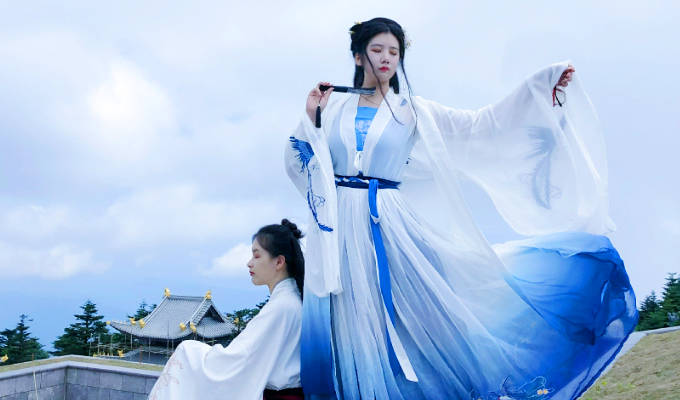A recent phenomenon in China is the sporting of clothes with great resemblance to ancient costumes in Chinese TV shows, a trend that is indicative of a larger tide of interest in all things vintage, Chinese style.
Go back a decade, before patriotic nationwide fever gripped the Chinese, to when vintage was imported from the west. Think old telephones and typewriters, American car number plates and movie posters, employed as decorations in a bid to secure more latte sales.
Today, the boot is on the other foot. Yet, unlike in western countries, vintage in China is a generational affair, with age being the probable determining factor.
The young are those most likely to be seen today wearing the aforementioned Hanfu, clothing that generally represents that the Han ethnic group wore in ancient times.
The rise of Hanfu is in part a result of the government’s constant promotion of Chinese traditional culture and part that the Chinese entertainment industry is booming, with über-epic (hundreds of episodes in a series) historic period dramas becoming all the rage. While such shows are popular across the age spectrum, in reality, Hanfu is a hit with only the younger generation; middle-aged interest is rare, not to mention the old.
Ask someone born before the 1980s as to why they do not wear Hanfu, and be met with a surprised face, plus a statement of fact that when they were younger, nobody would wear such a thing. Older people will add that under the “certain social circumstance” of the 1960s and 1970s, vintage things such as Hanfu were absolutely inappropriate.
There’s no doubt as to the eye-catching nature of Hanfu. The Nanjinger caught up with some of today’s youth as to whether they would choose to wear Hanfu in their daily lives. Alisa Li, a graduated high school student, said, “I only wear Hanfu when I hang out with my friends”. Another high school student, Lucy Wang, admits that if it were allowed by her school, she would wear it every day, while acknowledging, “Wearing Hanfu is not suitable in summer”. An undergraduate, Astrid Zheng, currently studying in Australia, commented, “It really depends on my mood. … Sometimes Hanfu is not allowed on some occasions, so I would rather choose to wear clothes with a Han element”.
The popularisation of Hanfu is aided by modern technology; all three students say they mainly buy Hanfu online. Referring to its commercialisation, Zheng has a unique point of view; “The advantage brought by the commercialisation is that this could help to attract more people, but actually those Hanfu were altered to fit the aesthetic taste of the majority, so people might not get the chance to completely understand and appreciate the beauty of traditional Hanfu”.
While the young live out their lives in a fantasy fabric world, the older generations have their feet more firmly on the ground. To them, vintage is the real thing; the same sweeties and toys they enjoyed as children. For when those born in the new millennium go off to college, it is time for the 80s and 90s generations to be nostalgic, feeling their time of youth is in the past.
Children born in the 1980s will not have forgotten Tin Frog. As long as the wind is tightened, the frog can jump around. Frog jumping competitions used to be seen everywhere, on the concrete playground or on desks in classrooms. In those days, this kind of toy was real high-tech; mischievous boys would take the frog apart to learn how it worked.
While Tin Frog now appears outdated, replaced by toys with batteries and chips, others have enjoyed more longevity.
Remaining popular to this day, and to be now found in retro shops in malls nationwide, White Rabbit dates back to 1959, At first, the factory could only produce 800 kilograms of milk candy per day, and workers packed it all by hand. Today, the factory is needless to say more modern, and there have been numerous changes to packaging and design. Back then, the rabbit was lying down; today is it jumping around, while White Rabbit has also expanded its market, moving into producing lip balm with a milky smell.
Yet, one retro hit today remains a mystery. Well aware that it is unhealthy in the least, people are still addicted to Weilong Spicy Gluten. Such was its reputation that a good teacher’s scolding was certainly in store for students who would sneak spicy gluten into school, its strong aroma sure to pervade the entire classroom.
With the best friends of the millennials cold screens and the snacks and toys from stores in schools replaced by digital devices, so Chinese abroad are surprised to spot this snack from their childhood now becoming a luxury in the Chinese supermarkets of America, where Weilong Spicy Gluten is priced at over US$10 a pack.









